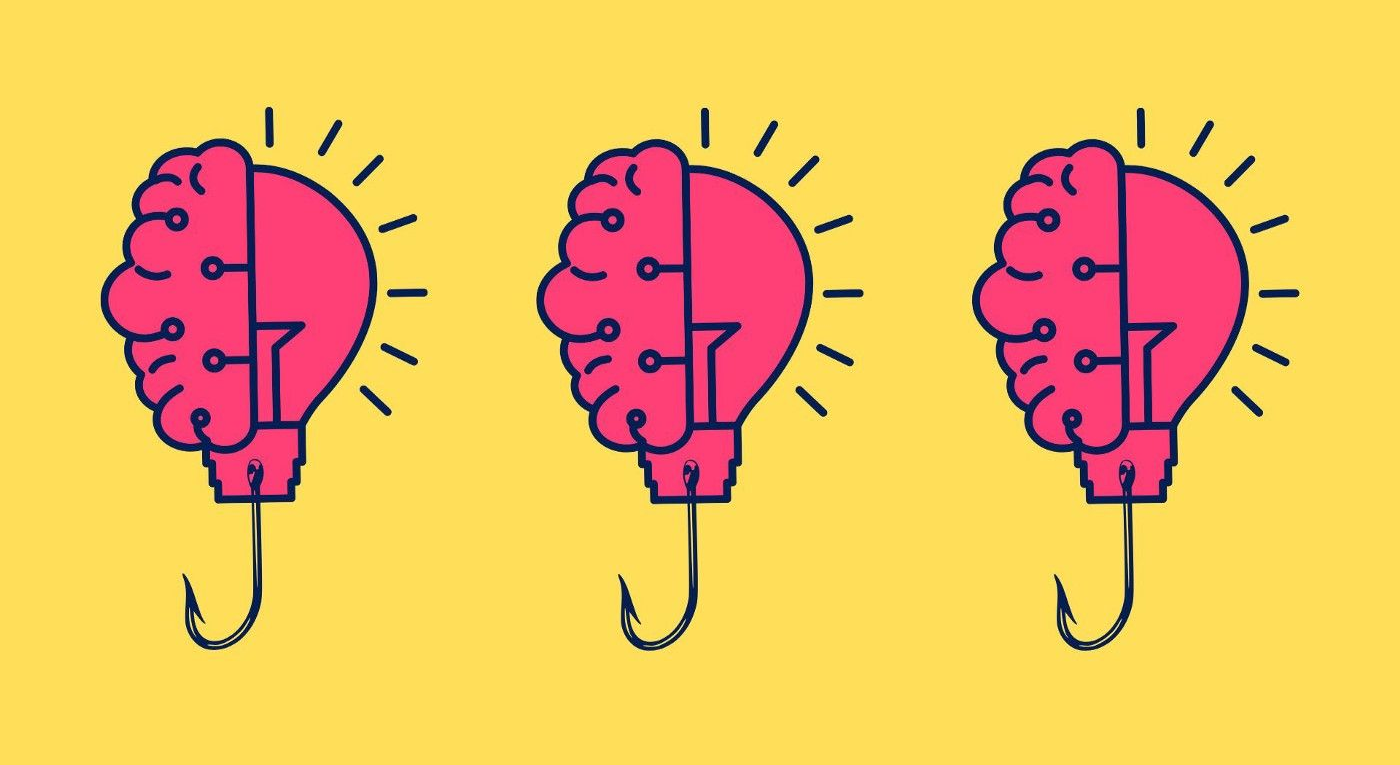We have a bit of insight into UX and decision-making. We have established that while designing a product we need to be aware of the user’s biases and behaviours. With this in mind can technology be designed to persuade people to behave in a certain way? Can it be used as a positive reinforcement? To understand this, we must unpack certain concepts.
Tapping into the user’s mental model
‘Decision making for most people is oriented around minimizing loss rather than maximizing gains’, based on the principle of loss aversion.
A user’s mental model is an internal justification that each user has developed regarding how a specific system functions. We have formed notions based on existing knowledge in our head and what we make of the world around us, creating cause-and-effect connections. What contributes to a user’s mental knowledge are: prior experience, our understanding of other processes and systems, and cultural norms to name a few. This then serves to direct our behaviour and actions when performing tasks.
Changing digital habits
It has been several decades since our access to information over the internet has significantly increased. The impact of and dependency on digital products and services in our lives have become almost synonymous. But does this also mean that the products and services that we use are our new reality? The calories you measure on a fitness tracker or the pressure you check on your blood pressure device, has become our truth. These things are routinely used on a daily basis, and many of us find it difficult to envision living without them.
For users who don’t want to go through mountains of generic information to uncover what’s relevant to them, tailoring technologies make life easier. Habits form when the brain stops actively deliberating on what to do next and almost automates certain activities. Introducing a new behavior (or, in other words, developing unfamiliar habits) is way more challenging. What user experience elements can help in the successful adoption of a new, unfamiliar habit? Can we tap into the already existing habits of the user and introduce new behaviours/habits? Possibly persuasive technology (technology created specifically to change its users’ attitudes, habits, or behaviors)can enable that. While we are aware of the negative implications of persuasive technology (a.k.a social dilemma /black mirror), this can be used effectively for building positive habits and choices.
Two concepts that can help us understand habit creation from a behavioural lens are — the hook model and B.J Foggs behavioral model.
Creating the hook
Hook model: It’s important that we familiarize ourselves with the Hook Model (Eyal and Hoover2013). The name of the model derives from its ability to “hook” people in to using a (typically computer-based) product that may lead to habit formation.The Hook Model is a four-step process used to hook users and form habits among them. The four parts of the model include: trigger, action, investment and variable reward.
Imagine a simple real-world experience — when you wake up in the morning and aren’t fully awake yet, but you need to trick your brain into being alert to conduct activities for the day. How might we ensure that we are fully awake? The simple act of the minty aftertaste of the toothpaste or washing your face lightly with water can act as a cue for alertness.
Trigger: To begin with, a user must be motivated to react to either an internal or external cue. As there is no internal drive to take action at first, the user is more likely to need an external trigger. Let’s take fitness apps as an example. External triggers for a fitness app could be pop-up notifications, emails to alert or remind you to burn more calories, exercise for the day. Internal triggers happen within the system and are formed as a user progresses through several hooks while using the product, the action is tightly coupled with an emotion. The self-motivation to make a lifestyle change, can be a potential internal trigger to keep engaging with the app. New habits are sparked by external triggers, but association with internal triggers is what keeps the users potentially hooked.
Action: The user will have to respond to the trigger by taking some action, which is a minor amount of work in exchange for a reward. For instance, the action of double tapping an image on Instagram. When you tap on it, the system immediately confirms your tap in the form of ‘like’ or heart emoji. This is an important part of the model because it draws upon usability design to drive users to take action.
Reward: The user needs to be rewarded for performing the previous action, it almost becomes a goal for the user to achieve. It provides instant gratification and satisfying a sense of craving to the users. There can be a multitude of rewards introduced to keep the user’s interest piqued. For instance, when you ‘like’ a certain kind of content on Instagram, videos and posts would appear on your feed based on your taste. These rewards motivate the users to repeat their actions.
Investment: Last but not least, the system must give the user a chance to make an investment in it, which will increase the probability that they will use it again. Investments include things like bringing new users to the system, for example, incentives in exchange for referring the app to a friend, providing feature feedback, etc. that will enhance the product as well.
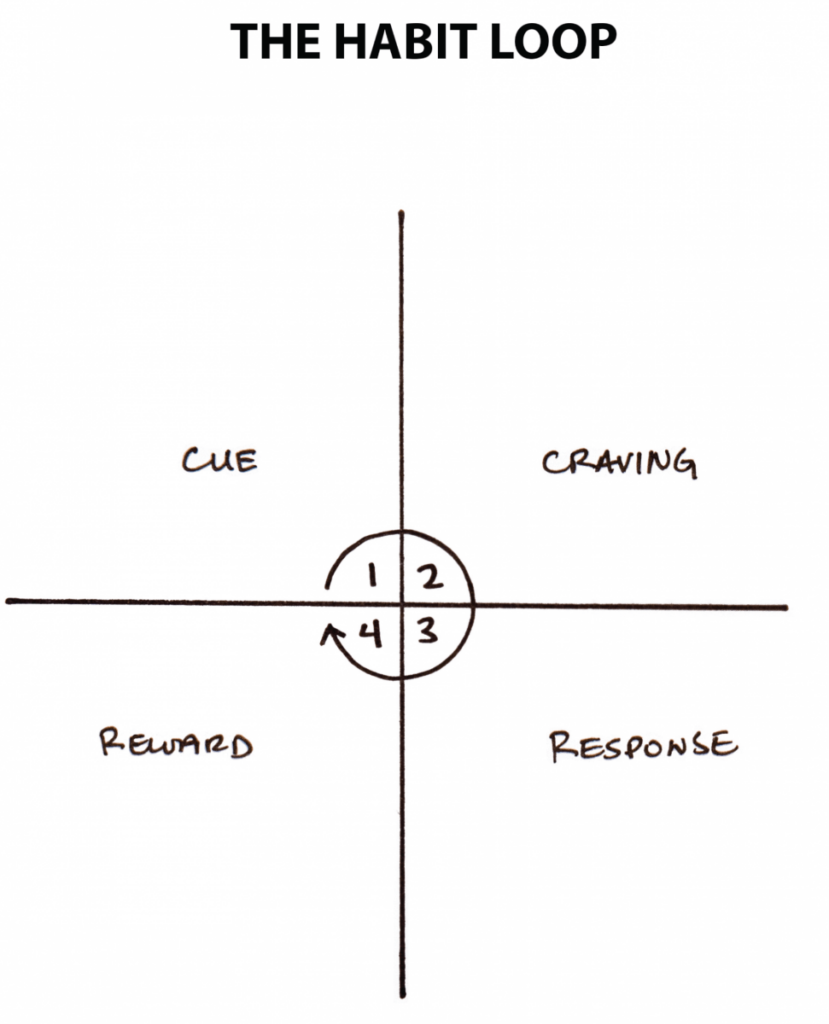
If there’s no repetition of this loop there will be no habit creation.
Fogg Behaviour model: This model can help us determine why a user is taking an action and make sure that a habit or desired behaviour is created effectively. For the behaviour to occur there are three key elements that need to be present — Motivation + Ability + Trigger. The ability and motivation of the individual to carry out the intended activity are crucial factors to ensure that the triggers will be effective. According to this approach, an external trigger won’t be as successful if engaging in a behaviour is challenging and the individual has little reason to do so.
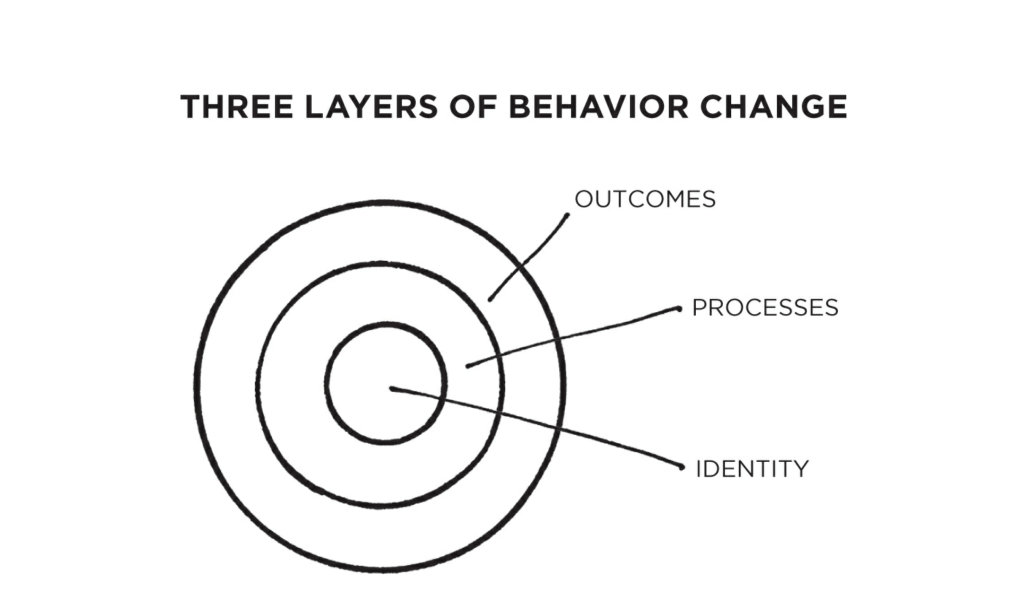
“The ultimate form of intrinsic motivation is when a habit becomes part of your identity.”- James Clear in the book Atomic Habits. It is evident that if there is intrinsic motivation, tying in the right cues or triggers may lead to the desired habit, however, how do we minimise the mental or physical barrier to be able to perform the action that will eventually turn into a habit?
Whether a task is easy or difficult to complete depends on one’s level of ability. Does it require too much time? Does it require too much money? Does the user have to think too much? Does it fit into a regular schedule? Is it socially abnormal?
Designing for irrationalities
As discussed in the previous article the user’s biases play a large part in their decision-making and can reduce their intrinsic motivation or cause users to give up trying to modify their behaviour at any of the stages and touchpoints along the habit formation process. Being mindful of these mental shortcuts and barriers can help UX designers focus on ability-based triggers and actions.
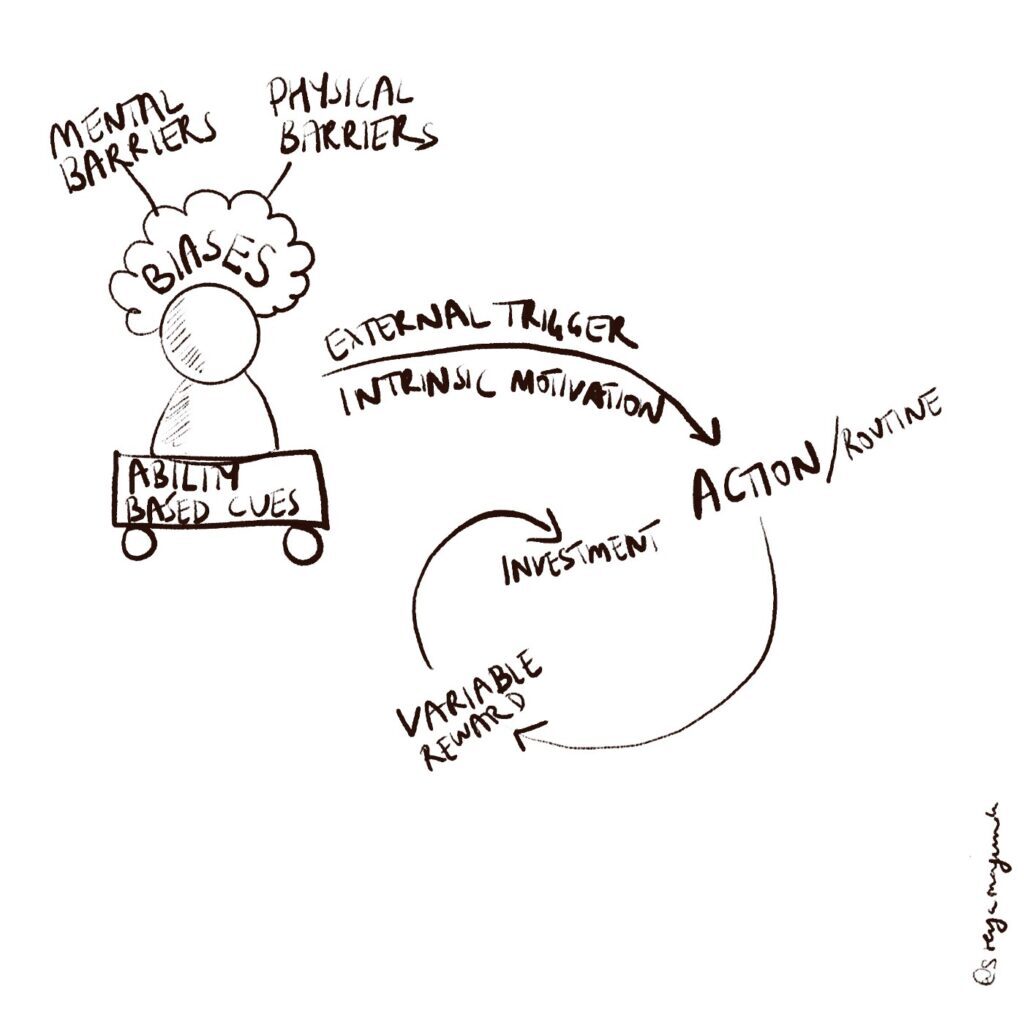
Some types of barriers, biases, and opportunities are identified below (from various research findings). Overcoming these barriers may lead to a habit creation and eventually a habit loop.
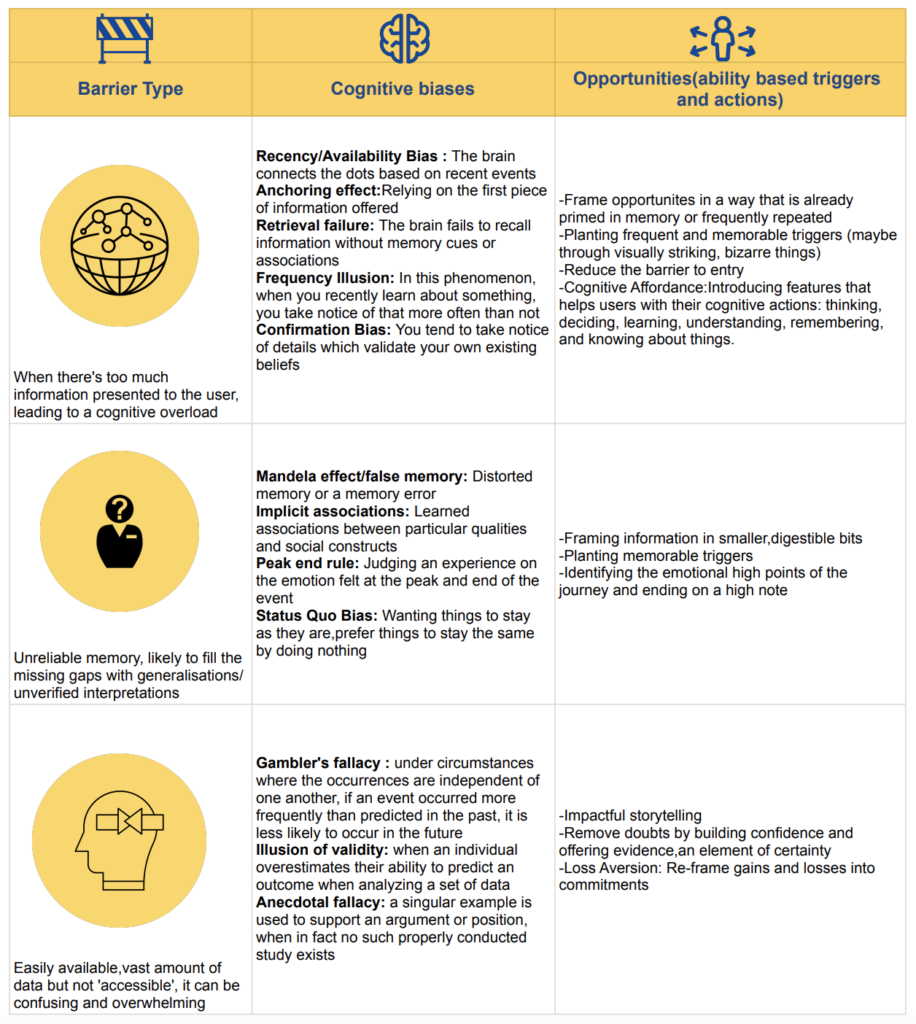
A positive reinforcement | sustainable behaviour change
If we know what an icon stands for or what would be the consequence of a certain action or getting feedback on an action, does that give the user the satisfaction or positive reinforcement to continue on the journey?
Strategically designing the presentation and timing of choices to encourage people to make self-beneficial decisions, riding on the intrinsic motivation and focusing on the ability of the user, can lead to a sustainable habit creation.
References
“Design for Digital Habits.” Bentley University. Accessed August 23, 2022.
Benson, Buster. “Cognitive Bias Cheat Sheet.” Medium. Better Humans, December 20, 2021.
“Book Summary: Atomic Habits by James Clear.” Sam Thomas Davies, June 25, 2022.


